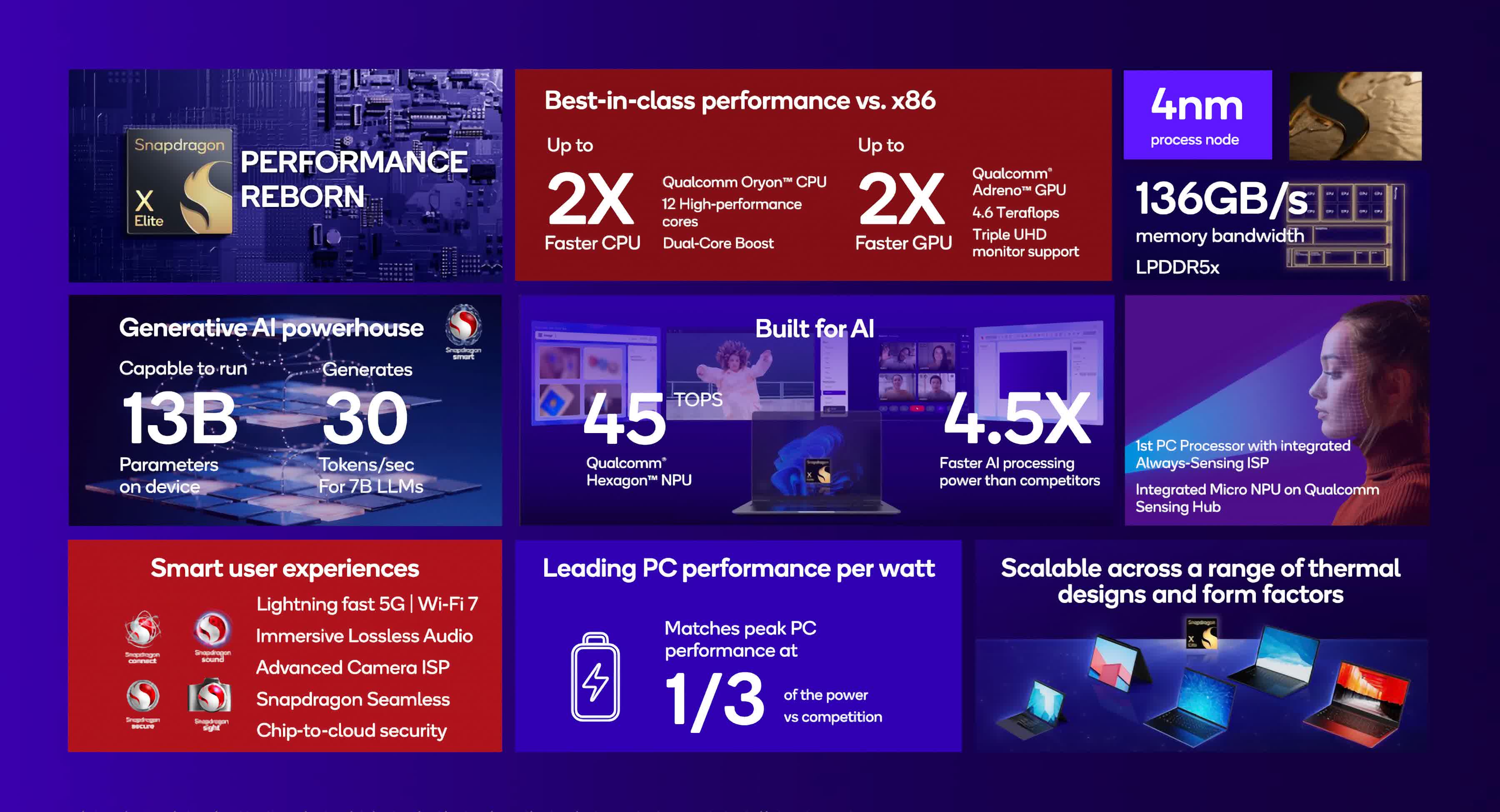Backside line: Whereas Arm-based PCs face some hurdles, their potential for development stays vital, pushed particularly by claims of superior battery life in comparison with earlier generations. Intel, in the meantime, is bettering adapt to new market calls for.
The PC market is present process a big shift as Arm-based processors achieve traction, difficult the long-standing dominance of x86 structure. Nonetheless, this transition just isn’t with out challenges, as highlighted by Michelle Johnston Holthaus, interim co-CEO of Intel, through the Barclays twenty second Annual World Know-how Convention.
Johnston Holthaus just lately claimed that retailers are grappling with a excessive return fee of Qualcomm-powered machines. “In case you take a look at the return fee for Arm PCs, you go discuss to any retailer, their primary concern is ‘I get a big share of those again,'” she mentioned, attributing the problem to compatibility issues with frequent functions.
Qualcomm was fast to reply although, “Our gadget return charges are inside trade norms,” a consultant instructed CRN. The spokesperson additional added that Qualcomm “expects 30% to 50% of laptops to transition to non-x86 platforms inside the subsequent 5 years.”
No matter one declare or the opposite, Arm-based techniques are making inroads into the PC market. Whereas Qualcomm Snapdragon X Elite machines presently maintain a mere 0.8% market share, the general Arm-based shopper PC phase instructions roughly 10% of the market. This development is primarily pushed by Apple’s M-series processors, which have paved the best way for wider Arm adoption.
Intel, for its half, is aware of the evolving panorama. “We [will] have extra opponents than we’ve got ever had. You will note extra opponents enter {the marketplace} in 2025,” Johnston Holthaus mentioned, probably hinting at rumors of MediaTek and Nvidia getting into the Arm-based Home windows PC market.
Crew Blue has been enhancing efficiency and energy effectivity to match Arm-based rivals. “We took too lengthy at Intel to develop into efficiency and power-oriented, and we made an enormous leap with our Lunar Lake product final yr,” Johnston Holthaus mentioned.
As an example, Intel launched a hybrid structure in its newest processor collection, combining Environment friendly-cores (E-cores) with Efficiency-cores (P-cores) to stability energy effectivity with excessive efficiency. This design went past laptops and desktops and had a notable affect in Xeon 6 datacenter CPUs, which provide 3:1 rack consolidation and as much as 2.6x performance-per-watt enhancements over their predecessors.
Intel can be collaborating with Arm to supply low-power SoCs utilizing its 18A course of and is already integrating AI {hardware} into its processors. The Lunar Lake structure, for instance, incorporates a fourth-gen NPU able to delivering as much as 48 TOPS – a fourfold enchancment over its predecessor.
Laptops that includes Qualcomm’s Snapdragon X Professional and Elite chips had been the primary PCs to help Microsoft’s Copilot AI options, positioning them on the forefront of the corporate’s AI PC push. Nonetheless, most AI PCs are gaining market traction by Intel and AMD’s x86 processors as an alternative.
In Q3 2024, AI PCs accounted for 20% of all PC shipments, a 49% improve from Q2, pushed by higher availability. Regardless of this development, shopper curiosity in AI PCs and GenAI options stays modest. Intel and AMD units, which symbolize about half of those shipments, are solely starting to obtain help for Copilot.
In the meantime, Snapdragon X laptops are receiving excessive praises primarily for his or her prolonged battery life, typically lasting a full day. Moreover, the upcoming end-of-life for Home windows 10 is predicted to drive a big gross sales enhance, as customers upgrading to Home windows 11 could inadvertently undertake AI PCs.




